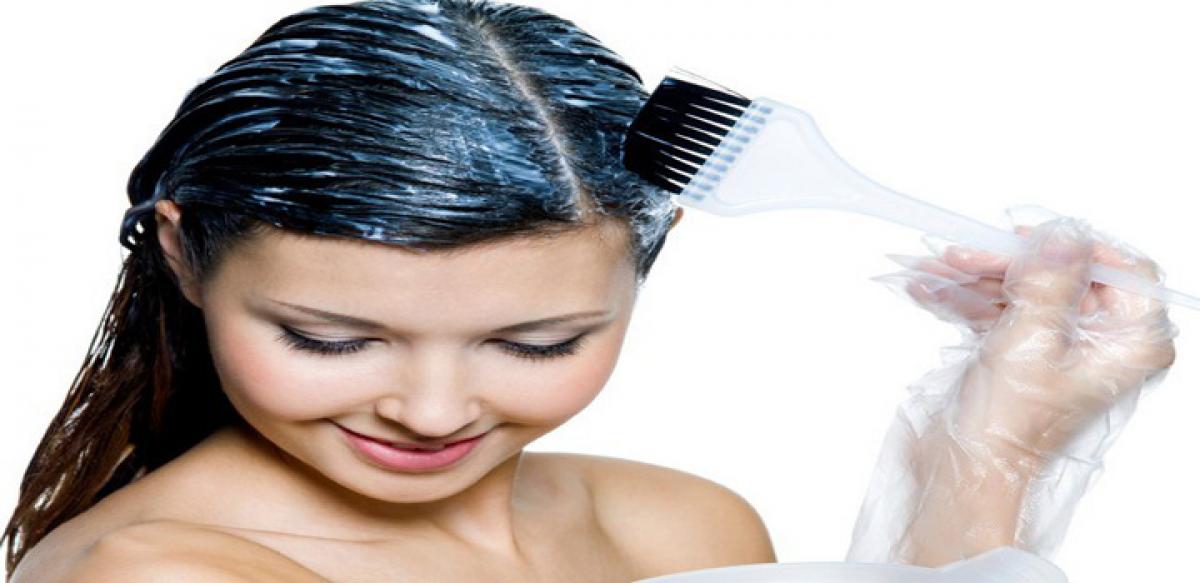Live
- Strict Action for Non-Adherence to Time Management - DMHO Dr. Swarajya Lakshmi
- Over 13.29 lakh houses approved for rural poor in Maharashtra: Shivraj Chouhan
- District Collector Urges Timely Completion of Indiramma Housing Scheme Survey
- Digital Arrest Scam: Hyderabad Man Duped of ₹7 Lakhs by Fake Crime Branch Police Callers
- Sukhbir Badal seeks President's Police medal for officer who saved his life
- US Firm Accordion Acquires Merilytics, Launches 1,500-Seater Office in Hyderabad
- Free Medical Camp Organized by Alampur Advocate Bar Association
- Allu Arjun Receives Notices from Police for Further Inquiry
- Key aide of terrorist Landa arrested by NIA from Mumbai in Punjab terror conspiracy case
- Manu Bhaker applied for Khel Ratna but was shockingly overlooked: Sources
Just In

Indeed, the hair is also affected by the seasonal changes and the summer sun. Moisture depletion is the immediate result of sun-exposure. It dries out the hair. The sun’s rays also cause damage to the cuticle, the outermost protective layer of the hair. It can even disturb the hair colour, whether natural or artificial.
The sun’s damaging effects on the skin are well known, but what about the hair?
Indeed, the hair is also affected by the seasonal changes and the summer sun. Moisture depletion is the immediate result of sun-exposure. It dries out the hair. The sun’s rays also cause damage to the cuticle, the outermost protective layer of the hair. It can even disturb the hair colour, whether natural or artificial.
The hair loses its shine and becomes rough. Due to moisture depletion, the hair can also become dry, leading to split ends and hair breakage. During summer, when the weather is dry and hot, one needs to protect the hair. Excessive exposure to the heat of the summer sun can dry out the hair, making it brittle (i.e. break easily). The hair may also acquire split ends.
Dry hair lacks moisture and needs plenty of nourishment. After shampoo, use a creamy conditioner, massaging it lightly into the hair. Apply on ends too. Leave it on for two minutes and then rinse with plain water. This helps to soften the hair and make it smooth and manageable. One can also use a hair serum or leave-on type of conditioner. Take very little and apply it the same way, but do not rinse off. Apply on the ends too.
It is a good idea to use shampoo and conditioner, or hair cream, containing sunscreens. A sunscreen hair cream in spray form would be a protective cover over the hair, protecting it from sun damage and fading of hair colour.
Home hair packs
Fenugreek (methi) seeds also protect the scalp from infection and dandruff. Soak the seeds overnight in water. Grind them into a paste. Apply the paste on the scalp and leave on for half an hour. Rinse well with water. Or, strain the seeds and use the water to rinse the hair.
Mix one teaspoon each of vinegar and honey with one egg. Beat them together well. Massage the mixture into the scalp. Then wrap the hair in a hot towel for twenty minutes, before washing the hair. Your hair will have more body and look shiny and manageable.
Use a green tea bag and a cup of hot water to make green tea hair tonic. You can even add a little lemon juice to it. Apply it on the scalp with cotton wool and leave on for 20 minutes. Green tea is also said to help control hair loss and condition the hair, as it contains Vitamins C and E. It not only restores health to the hair and softens it, but also adds a healthy shine.
Banana Hair Pack: Bananas can be made into a pulp and applied on the hair like a pack. Leave it on for 20 to 30 minutes and then wash it off. Egg yolk or curd may be added to mashed bananas and applied as a hair pack. If the hair is very dry, add one teaspoon pure glycerin or honey to the banana pack. Almond oil may also be added to the banana hair pack.
Banana can be also mixed with Avocado, honey and olive oil and applied as a hair pack, to soften and condition the hair.
Beat yogurt and mix with an egg. This also makes a nourishing hair pack. It adds body to the hair. Hibiscus Infusions: Both hot and cold infusions can be made from hibiscus flowers and leaves, though cold infusions are more common. For hot infusions, the flowers and leaves are added to boiling water and allowed to stand in it for 10 to 12 hours.
The infusion is strained and then used on the scalp. It can be used as a last rinse after washing the hair. For cold infusions, the flowers and leaves are allowed to stand overnight in cold water, in a ratio of one to six. The flowers are squeezed and the water is strained before use. Such infusions can be used to wash the hair and scalp, or applied on the scalp with cotton wool. Infusions, or the juice of the flowers, can be added to henna and applied on the hair. This can be a total hair-food and conditioning treatment.

© 2024 Hyderabad Media House Limited/The Hans India. All rights reserved. Powered by hocalwire.com







